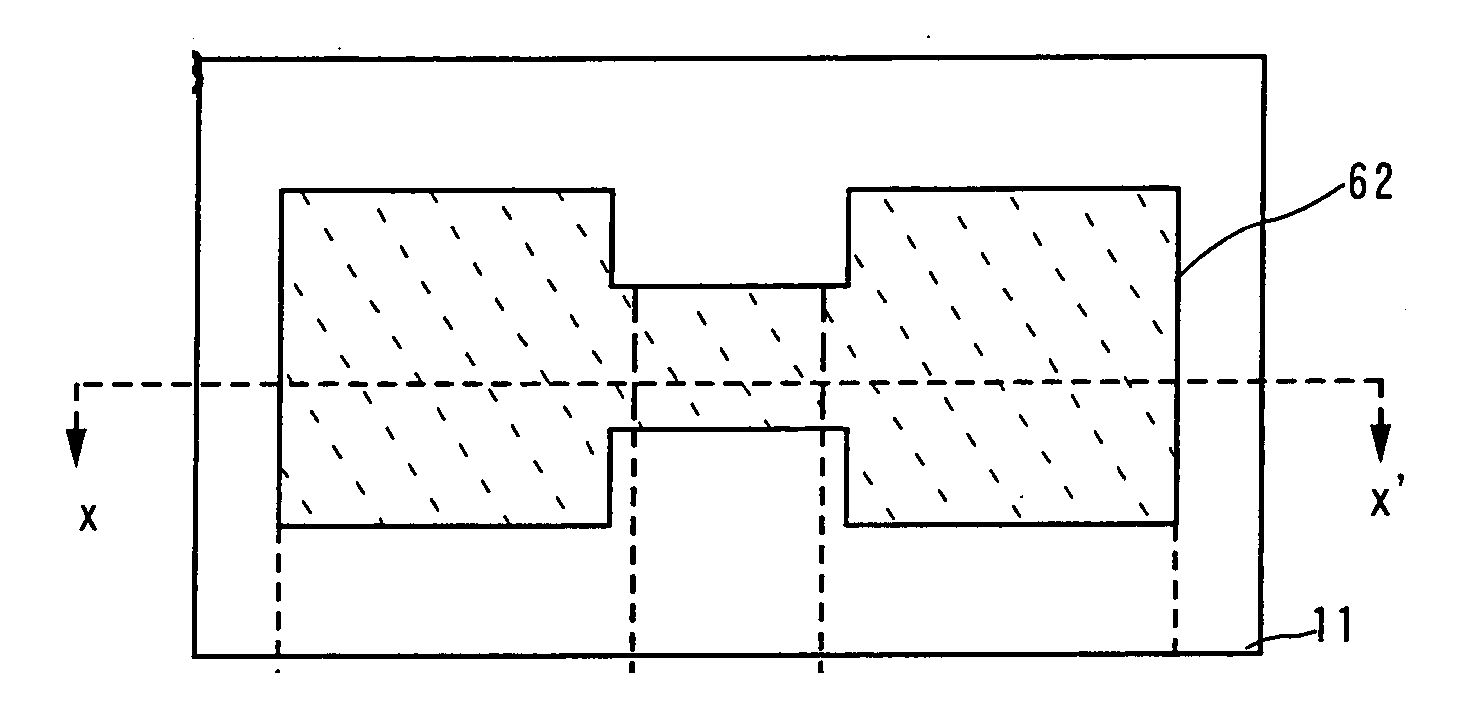Semiconductor device and method of fabricating the same
a semiconductor and semiconductor technology, applied in the direction of semiconductor devices, electrical devices, transistors, etc., can solve the problems of difficult to control the position of crystal grain boundaries or crystal orientation, the field effect mobility of tft cannot be made higher than that of a transistor, and the threshold characteristic is improved. , to achieve the effect of small variation in characteristics, high field effect mobility, and improved threshold characteristi
- Summary
- Abstract
- Description
- Claims
- Application Information
AI Technical Summary
Benefits of technology
Problems solved by technology
Method used
Image
Examples
embodiment 1
[0104] According to the embodiment, an explanation will be given of an example of a method of forming a first crystalline semiconductor layer by selectively-adding a metal element for promoting crystallization to a first amorphous semiconductor film. According to the embodiment, an explanation will be given of using nickel (Ni) and using a solution as a method of adding the metal element.
[0105] Refer to FIG. 1
[0106] There is prepared a substrate 10 for forming a crystalline semiconductor layer. As the substrate 10, a substrate comprising glass of barium boro-silicate glass or aluminum boro-silicate glass, or a substrate comprising quartz or silicon wafer can pertinently be selected in accordance with use of a semiconductor device or process conditions of temperature and the like. A substrate comprising a plastic material having high heat resistance of, for example, polycarbonate, polyimide or acrylic material can also be used when the material can withstand process temperature. Fur...
embodiment 2
[0166] According to Embodiment 1, the crystal orientation of the first crystalline semiconductor film is predominantly oriented to {111} by selectively adding the metal element. In contrast thereto, according to the embodiment, an explanation will be given of a method of forming a first crystalline semiconductor film predominantly oriented to {101} by using a silicon film added with germanium as a first amorphous semiconductor film.
[0167] Refer to FIG. 9
[0168] First, similarly to Embodiment 1, the base film 11 is formed on the substrate 10 and a silicon film 42 added with amorphous germanium is formed on the base film 11 as a first amorphous semiconductor film. As a method of forming the silicon film 42, a publicly-known film forming method of a sputtering method, a plasma CVD method, a low pressure CVD method or the like can be adopted.
[0169] When the plasma CVD method is applied, a reaction gas comprising SiH4 and GeH4, or a reaction gas comprising GeH4 diluted by SiH4 and H2 is...
embodiment 3
[0222] According to the example, an explanation will be given of an example of forming a lower layer of a first crystalline semiconductor layer by irradiating continuous wave laser and crystallizing an upper layer of a second amorphous semiconductor layer with the first crystalline semiconductor layer as a seed by irradiating continuous wave laser beam.
[0223] Refer to FIG. 15
[0224] First, similarly to Embodiment 1, the base film 11 is formed on the substrate 10 and an amorphous silicon film 52 is formed on the base film 11 as a first amorphous semiconductor film. As a forming method, a publicly-known film forming method of a sputtering method, a plasma CVD method or a low pressure CVD method can be adopted.
[0225] Refer to FIG. 16
[0226] Next, the first amorphous semiconductor film 52 is crystallized by irradiating continuous wave laser beam. Laser beam is irradiated while moving the irradiated region 21 produced by the continuous wave laser beam relative to the substrate 10 in a di...
PUM
 Login to View More
Login to View More Abstract
Description
Claims
Application Information
 Login to View More
Login to View More - R&D Engineer
- R&D Manager
- IP Professional
- Industry Leading Data Capabilities
- Powerful AI technology
- Patent DNA Extraction
Browse by: Latest US Patents, China's latest patents, Technical Efficacy Thesaurus, Application Domain, Technology Topic, Popular Technical Reports.
© 2024 PatSnap. All rights reserved.Legal|Privacy policy|Modern Slavery Act Transparency Statement|Sitemap|About US| Contact US: help@patsnap.com










